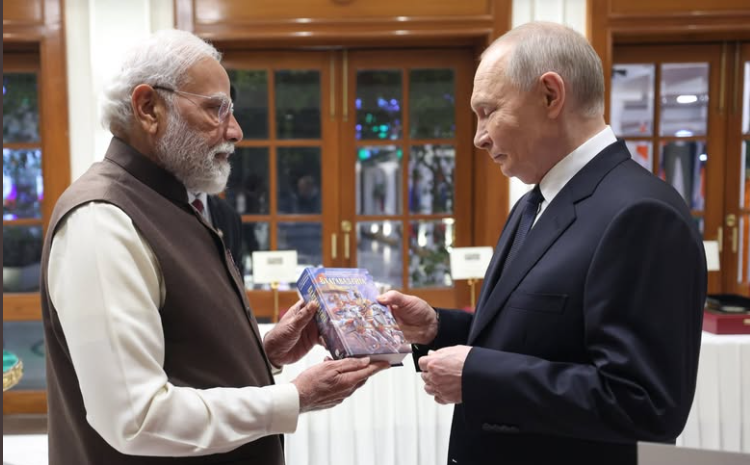India and the US: Working Toward a Balanced Trade Partnership
- Induqin
- Apr 23
- 3 min read
Updated: Apr 24
India is working to address its $41 billion trade surplus with the US by increasing imports and fostering collaboration through a proposed Bilateral Trade Agreement (BTA). Key discussions, including high-level visits, aim to bridge trade gaps and align on tariffs. India is also focusing on importing crude oil and LNG from the US, leveraging tariff benefits on US-sourced components. With a goal of $500 billion in bilateral trade by 2030, India seeks to strengthen ties while diversifying its global trade exposure.

India is actively pursuing measures to address its $41 billion trade surplus with the United States, a significant concern for Washington, as both nations aim to expedite a proposed Bilateral Trade Agreement (BTA). This development comes amid heightened focus on recalibrating trade relations and fostering greater economic collaboration between the two countries.
Encouraging Imports to Bridge the Gap
The Indian government is engaging industry stakeholders, including exporters and importers, to explore opportunities for increasing imports from the US. This move is seen as a strategic gesture to address America's trade deficit concerns, a key priority for the US administration. The trade deficit issue has been central to Washington's push for reciprocal tariffs, temporarily paused but still looming as a critical factor in trade discussions.
Bilateral Trade Talks Gain Momentum
Formal negotiations around the India-US BTA are expected to commence within the next month, with preliminary discussions already scheduled in Washington this week. A delegation led by India’s chief negotiator and commerce secretary-designate, Rajesh Agarwal, will engage US counterparts in a three-day dialogue beginning April 23. The proposed BTA is likely to encompass 19 chapters addressing diverse topics, including goods, services, non-tariff barriers, customs facilitation, and regulatory frameworks.
The high-level meetings coincide with prominent visits by leaders from both countries. US Vice President JD Vance is set to visit India to discuss economic and diplomatic issues with Prime Minister Narendra Modi. Simultaneously, India’s Finance Minister Nirmala Sitharaman is in the US for the World Bank-IMF meeting and G20 Finance Ministers’ discussions, where trade issues are expected to feature prominently in her bilateral talks with US Treasury Secretary Scott Bessent.
Shifting Trade Dynamics
India’s approach to narrowing the trade gap with the US includes increasing imports of crude oil, liquefied natural gas (LNG), and other key commodities. Recent regulations from the White House, which calculate import tariffs based on the share of non-US content in a product, offer an incentive for India to source materials directly from the US. Industry experts note that sectors like plastics and gems and jewelry could particularly benefit from these tariff adjustments, as US-sourced components would incur lower duties.
Despite these adjustments, exporters will need to weigh the cost-benefit dynamics, factoring in raw material prices and potential gains from reduced tariffs on finished goods.
Expanding Bilateral Trade Goals
India and the US have set an ambitious target of increasing bilateral trade to $500 billion by 2030. Government officials emphasize that redirecting some imports to the US should not pose significant challenges, given India’s overall trade deficit of $282 billion. In FY25, India’s imports from the US rose by 7.4% to $45.3 billion, while exports to the US surged by 11% to reach $86.5 billion. Key imports include crude oil, gold, plastics, and aircraft, while major exports encompass pharmaceuticals, telecom equipment, precious stones, and ready-made garments.
Diversifying Global Trade Exposure
While strengthening ties with the US, India is also focused on diversifying its trade relationships globally. Expanding into new markets remains a priority as part of India's broader strategy to reduce reliance on specific trading partners and enhance its global trade footprint.
The upcoming discussions and the proposed BTA represent a significant step forward in India-US trade relations. By addressing mutual concerns and fostering greater collaboration, both nations aim to build a more balanced and robust economic partnership. As these negotiations unfold, the outcomes could pave the way for a new chapter in bilateral trade, benefiting industries and economies on both sides.







Comments